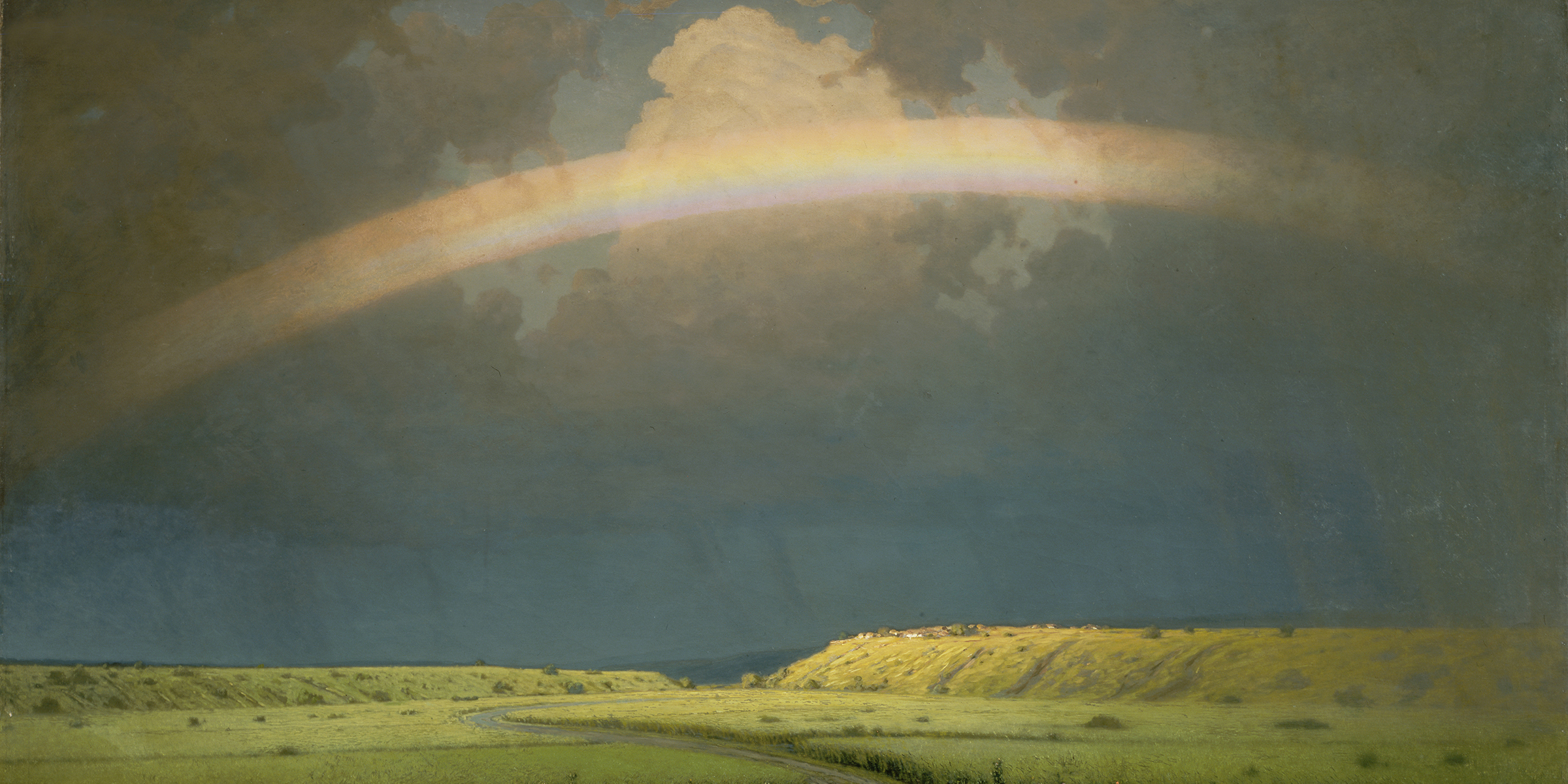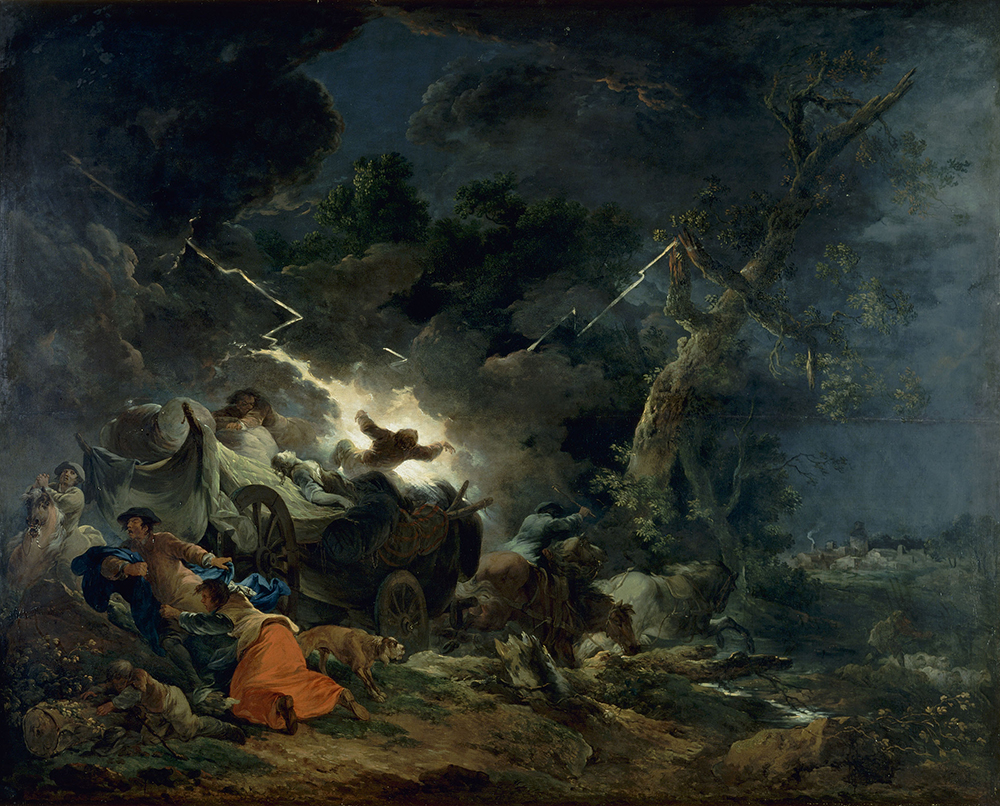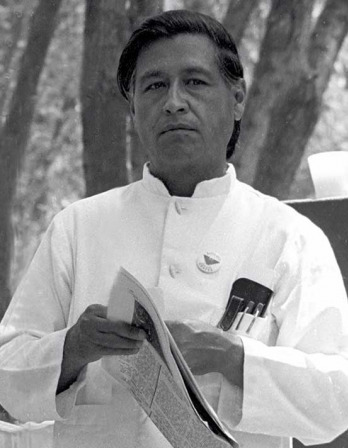We seek with our human hands to create a second nature in the natural world.
—Marcus Tullius Cicero, 45 BC
Flower clock in the Jardin anglais, Geneva, Switzerland, 2012. Photograph by Cayambe. Wikimedia Commons (CC BY-SA 3.0).
Twelve years, or so the scientists told us in 2018, which means now we are down to eleven. That’s how long we have to pull back from the brink of climate catastrophe by constraining global warming to a maximum of 1.5 degrees Celsius. Eleven years to prevent the annihilation of coral reefs, greater melting of the permafrost, and species apocalypse, along with the most dire consequences for human civilization as we know it. Food shortages, forest fires, droughts and monsoons, intensified war and conflict, billions of refugees—we have barely begun to conceive of the range of dystopian futures looming on the horizon.
One person who looks squarely and prophetically at the potential ramifications of climate change and insists on a response is Greta Thunberg, the sixteen-year-old Swedish environmentalist who launched a global wave of youth climate strikes. In April 2019 she gave a tour de force address in the British Parliament, invoking not just her peers who were regularly missing class to protest government inaction but those yet to be born. “I speak on behalf of future generations,” Thunberg said. “Many of you appear concerned that we are wasting valuable lesson time, but I assure you we will go back to school the moment you start listening to science and give us a future.”
Thunberg accepts what many influential adults seem unable to face: the inevitability of change. Change is coming, either in the form of adaptation or annihilation; we can respond proactively or reactively to this discomfiting fact. Perhaps she can accept this because she is so young. Eleven years, a little over a decade, is the time for a human infant to become a preteen and for a preteen to become a young adult. For Thunberg, eleven years is more than two-thirds of her life, a veritable expanse that, projected forward, will involve crossing the threshold from adolescence to the first stage of maturity. Yet for a relatively contented middle-aged or elderly adult, eleven years isn’t as substantial—not quite the blink of an eye but a continuation of the present, a deeper dive into one’s golden years. At a certain point, stasis is the goal, to ward off decline. But decline awaits us all—as the economist John Maynard Keynes bluntly put it, “In the long run we are all dead.” Everyone’s time on earth must come to an end. The question is, What do we do with such knowledge?
It would be interesting to know what Keynes, vanquisher of financial depressions, would say if he were around to reflect on our present predicament. In his 1930 essay “Economic Possibilities for Our Grandchildren,” he optimistically predicted that increasing productivity and boundless growth would usher in an age of shared leisure and abundance. How could he have foreseen that a commitment to never-ending economic expansion would instead yield conditions of massive inequality and ecological instability? Obliviously compelling the extraction of natural resources to meet escalating targets, capitalism inevitably leads to environmental catastrophe. And so we teeter on a precipice.
Faced with the deleterious effects of capitalism’s ecologically extractive embrace, a growing number of activists correctly insist that the first step is to dramatically curtail fossil-fuel extraction and emissions and invest in renewable-energy technology, two central pillars of what is now called a Green New Deal. Keeping resources in the ground would mean energy companies forfeiting approximately $20 trillion in assets, a prospect conventional business models will never willingly entertain; those assets are already on the books, factored into future projections, and to abandon them would cause stocks to tumble. At the same time, a just transition to a carbon-neutral society will require trillions of dollars of investment and state action on an unprecedented scale. The moment calls for a radical transformation of the dominant economic calculus, a rejection of its limited conception of value and insatiable appetite for immediate returns. But even mitigating potential damage will demand significant losses for the private sector and colossal public expenditure.
The struggle ahead—and it will be an epic one—will be over who will pay for this transition and when. The science is unequivocal: we must act now because we failed to act decades ago. Meanwhile, the world’s plutocrats prefer to procrastinate or block progress, unmoved by the argument that because their past actions disproportionately precipitated the current emergency, they are responsible for repairing and preventing further harm. Some are resistant to reckoning with the full extent of the climate crisis because they are positioned to profit from it. Others are able to buy time by investing in secluded retreats and armed bunkers, hedging bets and speculating on what property will best guarantee their individual security and survival.
For the working class, already stretched thin, time is a luxury fewer and fewer can afford. That was the message of France’s Gilets Jaunes, or Yellow Vests, revolt, which erupted in late 2018 in response to an environmentally minded but regressive fuel tax that would have taken the biggest toll on low-income and rural people. In France as elsewhere, expanding prosperity is not evenly shared, with the affluent capturing the bulk of the economic rewards while the less privileged bear the brunt of the ecological crisis, including during a heat wave that claimed several lives in July 2019. Tired of condescending leaders comfortably ensconced in urban centers, aggrieved citizens took to the streets, rallying under a stark slogan: “The elites talk about the end of the world while we are talking about the end of the month.” But some Yellow Vest demonstrators soon adopted a different and more hopeful motto: “End of the world, end of the month, same struggle.”
“For fuck’s sake, life expectancy is declining in America,” Chloe Watlington laments in a moving essay for Commune magazine about the alienation and despair of trying to survive in a winner-take-all society. Rich people are living longer and dreaming of life-extension therapies, but the poor are losing ground, perishing ten to fifteen years earlier on average than their wealthier counterparts. “On a dying planet we are dying sooner. It’s like being in an otherwise quiet room with the loud ticking of a nearby clock. Can’t you hear it?”
One clock ticks forebodingly. And then another. And another. Mussels are roasting in their shells on the California coast, a mother orca carries her dead calf for seventeen days while her pod goes hungry, clear-cutting quickens pace in the rain forests of Brazil, the Maldives are sinking, and Arctic ice is receding. No wonder we are on edge, with all these alarms perpetually blaring.
Part of the difficulty of addressing the climate crisis has to do with different timescales operating simultaneously. End of the world, end of the month. There are so many clocks and so little time: economic clocks, physical and chemical clocks, nature’s innumerable biological clocks, our inner psychological clocks, and collective cultural clocks. It’s a temporal cacophony, a disorienting polyrhythm. To figure out how to move forward, we should pause and delineate the different tempos we dwell within.

The Rainbow (detail), by Arkhip Kuindzhi, c. 1900. © Scala / Art Resource, NY.
Capitalism’s clock ticks loudest in our ear, setting the primary rhythm we now march to—possibly off a cliff—yet the clock of industrial standardized time is a relatively new phenomenon in human history. For most of our species’ existence time was a local affair, noon established by the sun’s place in the sky, a fluid movement from east to west. It was not something set by the clearly delineated time zones we now inhabit. O’clock is a contraction for of the clock, a vestigial reminder that there was a time when clocks were novelties and clock time obviously foreign, an interloper not yet internalized as the societal default.
For eons sun and seasons determined our ancestors’ habits. When night fell, work ceased; the first light signaled it was time to begin again. A shadowy sky could make the exact time of day difficult to discern. Industrialization changed that. As new modes of manufacturing developed, time itself was systematized and commodified. Abstract, regimented modes of measurement eclipsed other ways of conceiving and communicating duration; the impromptu and sporadic yielded to the regularly scheduled and predictably recurrent. In his essay “Time, Work-Discipline, and Industrial Capitalism,” the British historian E.P. Thompson invokes Madagascar, where time was measured by “a rice cooking” (about half an hour) or “the frying of a locust” (a moment), and tells of some native communities that spoke of how a “man died in less than the time in which maize is not yet completely roasted” (less than fifteen minutes). As industrialization progressed, all manner of clocks proliferated, a symbol of a new market-driven organization of time and synchronization of labor. Today your clock may be analog or digital, or maybe your clock is your phone. Time may be told by swinging pendulums, the frequency of quartz (32,768 Hz), or via cell-tower link to the vibrations of far-off strontium atoms.
Undergirding this shift in perception and organization was a transformation in energy supply: the shift to fossil fuels. Scattered energy resources—wood, human and animal labor, water, and wind—are no match for coal. Coal turned water into steam, and steam power led to the development of trains, which crisscrossed the country and then the world. Coal seams are the accumulation of past energy reserves, and the discovery of this ecological endowment catalyzed an extractive frenzy. “In the abstract, mankind entered into the possession of a capital inheritance more splendid than all the wealth of the Indies,” the inimitable critic Lewis Mumford wrote in Technics and Civilization in 1934. But like “a drunken heir on a spree,” industrialists began burning through humanity’s bequest. “The psychological results of carboniferous capitalism—the lowered morale, the expectation of getting something for nothing, the disregard for a balanced mode of production and consumption, the habituation to wreckage and debris as part of the normal human environment—all of these results were plainly mischievous.” Out of this mischief “carboniferous capitalism” was born. Coal, gas, and oil allowed for the accumulation of power in a triple sense—mechanical power, social power, and economic power—by the few who controlled the sources and supply chains.
This is the moment we leaped into the unknown. The dawn of carboniferous capitalism marked the beginning of what scientists, in a 1957 paper, called “a large-scale geophysical experiment of a kind that could not have happened in the past nor be reproduced in the future.” The industrial revolution set into motion a chain of events that would begin to reverse protracted natural processes at breakneck speed: “Within a few centuries we are returning to the atmosphere and oceans the concentrated organic carbon stored in sedimentary rocks over hundreds of millions of years.”
Carbon has its own clock, the cadence of physical and chemical laws and facts of prehistory offering a counterbeat to modern capitalism, which seeks short-term gains and predictable outcomes pegged to a calendar. Fossil fuels, in contrast, are the past condensed, and the physical processes unleashed through their consumption are not linear, which is why scientists warn of “tipping points.” Every barrel of oil represents both a swath of land and an epoch of life—the product of photosynthesis and the geological remains of once living organisms—concentrated to its potent essence. Two and a half centuries after the industrial revolution began, we are finally forced to come to grips with the consequences of burning coal. The coal put to work in nineteenth-century Manchester shapes our environment today, just as the emissions from the burning of fuels from Saudi oil fields, American natural gas reserves, and Canadian tar sands will haunt life on earth for a long time to come. “Global warming is a sun mercilessly projecting a new light onto history,” writes Andreas Malm in Fossil Capital, a history of steam power. “If we wait some time longer and then demolish the fossil economy in one giant blow, it would still cast a shadow far into the future: emissions slashed to zero, the sea might continue to rise for many hundreds of years.” By burning up the past, we imperil everything to come.
We can see the danger in the environment around us. Nature’s timekeeping methods are increasingly confused; delicately evolved biological clocks erratically speed up or slow down. In some places, flowers and leaves bud too early, with devastating results. In 1751 the botanist and taxonomist Carl Linnaeus proposed a horologium florae, or flower clock, a hypothetical garden that would allow a fanciful form of tracking the hours based on the fact that certain plants bloom at certain times of day. Linnaeus’ flower clock was never really going to catch on, because as Ziya Tong explains in her revelatory book The Reality Bubble, the time when many flowers open depends not just on a particular hour but on the amount of available daylight. The timekeeping would be hyperlocal and at the whim of the weather, not dissimilar to a sundial rendered useless by cloud cover. But with climate change, Tong warns, such flower clocks “have begun to bloom at unusual times”—off not just by hours or days but weeks or even months.
While hardly suitable for maintaining a tight work schedule, horologia florae exist on a more fundamental level. Plants blossom and fade at specific times during the year, and creatures are dependent on their cycles, a complex dance involving plants, pollinators, and other animals. Tong reports that in 2016, over six hundred plant species bloomed early, according to a study by the Botanical Society of Britain and Ireland. Plants and animals are increasingly out of sync with each other, something experts in phenology—the study of the timing of biological events such as plants flowering and insects laying eggs—call a “mismatch.” Biologists who pay attention to natural physiological rhythms and cyclical and seasonal phenomena have begun to notice that the interaction between species is shifting off the beat.
Desynchronization upsets delicate relationships between migration, reproduction, and survival with cascading consequences. Not all species use the same temporal cues. A growing number of birds now arrive late for spring, having timed their migration with the sun, while many plants are more attuned to changes in temperature. A warming climate can mean leaves shoot early, encouraging insects to emerge to feast, but by the time migrating birds arrive to eat the insects, they are already gone. Flowers may bloom before—or sometimes after—pollinating beetles, bees, or wasps appear, symbiotic partners out of step to the detriment of both. Other dependent but increasingly off-rhythm pairs abound: spider orchids and mining bees, puffins and herring, caribou and lichen, the red admiral butterfly and the stinging nettle. “Oak tree buds are eaten by winter moths, whose caterpillars are in turn fed by great tits to their chicks, but the synchronicity of all these events has been disrupted,” the Guardian observed. One scientist explained, “There will be progressive disruption of pollination systems with climatic warming, which could lead to the breakdown of co-evolved interactions between species.”
Conjecturing a Climate
Of unsuspended Suns –
Adds poignancy to Winter
The shortsighted actions of one species are the source of the mismatch—our species. We are out of sync with everything on earth and even with one another. There are 7.7 billion human beings and counting, each of us possessing a kind of inner clock, a unique expression of lived time. For Homo sapiens, time is strange not only because it is relative, as Albert Einstein and others revealed, but because it is subjective; it is not only biological, like the clocks of flowers and trees, but also psychological. Our personal experiences of time are inconsistent, mutable. In childhood a month can linger for an eternity; for someone in middle age, a season unspools at a disorienting clip.
Sometimes time can slow. Both boredom and awe make the seconds stretch, and so does fear, an emotion likely to be evoked if you read the latest climate news. The problem is that fear does not provoke rational action to address the urgent problem at hand. While a subset of committed activists and hard-line survivalists are motivated by grim statistics and respond productively to warnings about rising CO2 levels, research shows that doom-and-gloom messaging doesn’t work across the board. “Apocalyptic rhetoric causes most people to just ignore it,” Joanna Huxster, a professor of environmental studies at Eckerd College, told me. “It creates a shutdown.”
Huxster and other academics interested in science communication are trying to figure out what makes us tick: Which messages facilitate constructive action and which provoke apathy, panic, anger, or denial? Time plays a role in marking the difference. You can see the challenge, she explained, in the fact that we don’t naturally distinguish between weather and climate, though they are distinct phenomena. Huxster tells her students that climate is how you choose your vacation site; weather is how you know what to pack. Climate unfolds on a grand scale that is difficult to perceive, shifting over years, decades, centuries, or millennia. Weather, in contrast, is immanent, captured in a ten-day forecast.
Part of the problem is that most of us have difficulty conceiving of the past and the future. Our weather memories are unreliable. We project the present onto the past, assuming that summers were always as roasting or winters as snowless as they are now. At the same time, we struggle to imagine a few decades ahead. The years 2100 or 2050—dates widely discussed in climate research—are simply too far away to feel acute for most people. Human-centered messaging that is now or near term and focused on fairness (rather than the nuances of scientific research) are most effective, research shows. This is the small upside to climate scientists’ recent determination that their earlier projections were too optimistic and that we must act swiftly. Eleven years is a “graspable amount of time,” according to Huxster—short enough that it is difficult (though still not impossible) to ignore the sound of the clock.
Part of the anxiety many of us feel around climate change is the fact that no one knows what will happen next. But perhaps that’s the wrong way to think about it. The ancient Greek root chronos means chronological time, a sequential unfolding. But the ancient Greeks complemented it with kairos, which meant a propitious moment, the time for decision or action—a term that in modern Greek has coincidentally come to mean weather. Perhaps the opportune time to intervene is fleeting, like a passing thunderstorm or the peak of spring, and we risk a mismatch by striking too late.
Which brings us back to the striking children, the teenagers in revolt. They understand what time it is: it is time to act. Young people around the world are angry, because they feel their futures have been stolen and sold, along with those of generations to come. Capitalist mantras of endless economic growth and intensifying extraction rationalize a kind of trans-temporal theft, a ransacking of both collective patrimony (the planet’s accumulated bounty) and prospects (its continuing habitability). Perhaps it makes sense that children, who usually are closer to birth than death, would relate strongly to people who have not yet been born and defend their interests.
“Man is born a debtor to society,” the French statesman Léon Bourgeois wrote in 1895. From first breath, each of us is bound in a complex web of relationships that transcend the current moment. Thinking of time as chronological might be part of what is holding us back from finding a sustainable path. Past, present, future—climate change combines all these registers at once. Time is not an arrow, relentlessly moving forward, but something circular and strange, more akin to “a lake in which the past, present, and future exist,” to quote the Potawatomi botanist Robin Wall Kimmerer, than a rushing river. We need a new vocabulary and new understandings—or maybe we need to revive concepts and traditions unjustly deemed relics of an outmoded, obsolete age by a dominant culture invested in their disappearance.
Three years ago Tł'akwasik’an Khelsilem, now thirty, founded Kwi Awt Stelmexw, an arts and culture organization in Vancouver that offers language classes. Only one original Skwxwú7mesh (often called Squamish) language speaker remains, but that person is now part of a broader community of around fifty speakers and learners that is steadily expanding, in good part due to Khelsilem’s efforts. A linguist, activist, and philosopher, and a Skwxwú7mesh Nation council member, Khelsilem explained that the phrase Kwi Awt Stelmexw does not easily translate into English but can be interpreted as both “the last people” and “the coming after people,” both ancestors and descendants. The people of the past and future, while not exactly one entity, are also not opposed. “Awt refers to something that comes after or first, which is confusing,” he told me. There is both a temporal and spatial component to the term. “One way to think about this is the ones that are coming after you—which sounds like they are behind us instead of in front of us. They are behind us and yet ahead.” The people coming behind us in space are also the people who are ahead of us in time.

Peasants Surprised by a Thunderstorm, by Francesco Casanova, c. 1773. © RMN-Grand Palais / Art Resource, NY.
The challenge, Khelsilem said, is how to thread the needle between “the ideological battle between endless progress and great nostalgia,” a phrase he attributes to another local Vancouver organizer, Matt Hern. Given the history of colonization—a kind of apocalypse in itself—indigenous communities have a unique perspective on the promise of both past and future, on tradition and what will happen next. “A central belief is that the equality of life we had before colonization was much better than we have now. There is an urge to restore; there is something that we are trying to revitalize, because it has the possibility to improve the lives of our people,” Khelsilem told me, explaining why language reclamation is so important. “It’s a structure of looking at the work of predecessors and seeing that we need to pay it forward, and wanting to make a life for those living now and those who will be. It comes from a place of a lot of gratitude.” Gratitude toward those who came before necessitates taking care of those who exist now or one day will. The present is a spoke, linking us forward and backward in time through bonds of affection, obligation, innovation, and possibility.
In contrast, capitalist settler-colonial culture imagines the present as little more than a pit stop on the superhighway to a better tomorrow, a truncated outlook that allows us to imagine ourselves as the primary beneficiaries of progress. A better tomorrow, we might be around to see; a better next century or two would be aimed at others, at posterity.
Where has this attitude gotten us? The destination remains unknown, but we’ve hit a fork in the road: shift course or race off the cliff, taking the striking children’s futures down with us. As we burn through our common ecological inheritance at the behest of an intransigent economic elite, the past haunts the present, transforming natural cycles and looming ominously over everything to come. To survive the burgeoning climate crisis, we need to reckon with our relationship to time. The seeds of approaches that might help ensure sustainability and survival may have been sown long ago; in our quest for solutions, we should look to long-standing principles and not only pray for a quick technological fix. The ancient recognition of time’s polyrhythmic and sometimes staccato unfolding, with an ear tuned to kairotic rupture and a more expansive notion of solidarity across generations, may be just what this moment calls for. “End of the world, end of the month, same struggle”—the slogan speaks a profound truth, but we still must work to make it real. Somehow we have to manage to conceive of multiple timescales and horizons at once, or we are toast.

This story is part of Covering Climate Now, a global collaboration of more than 300 news outlets to strengthen coverage of the climate story.




